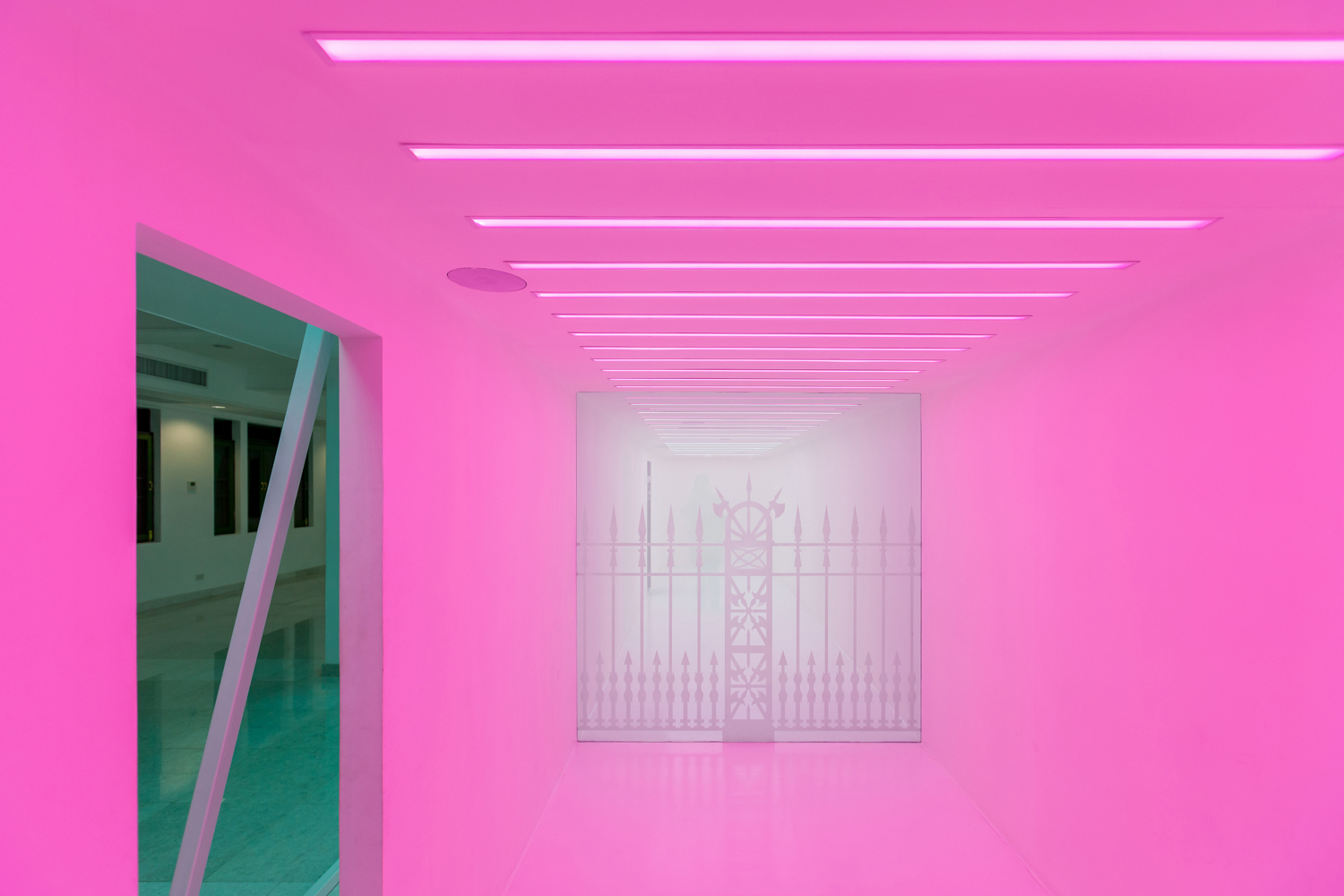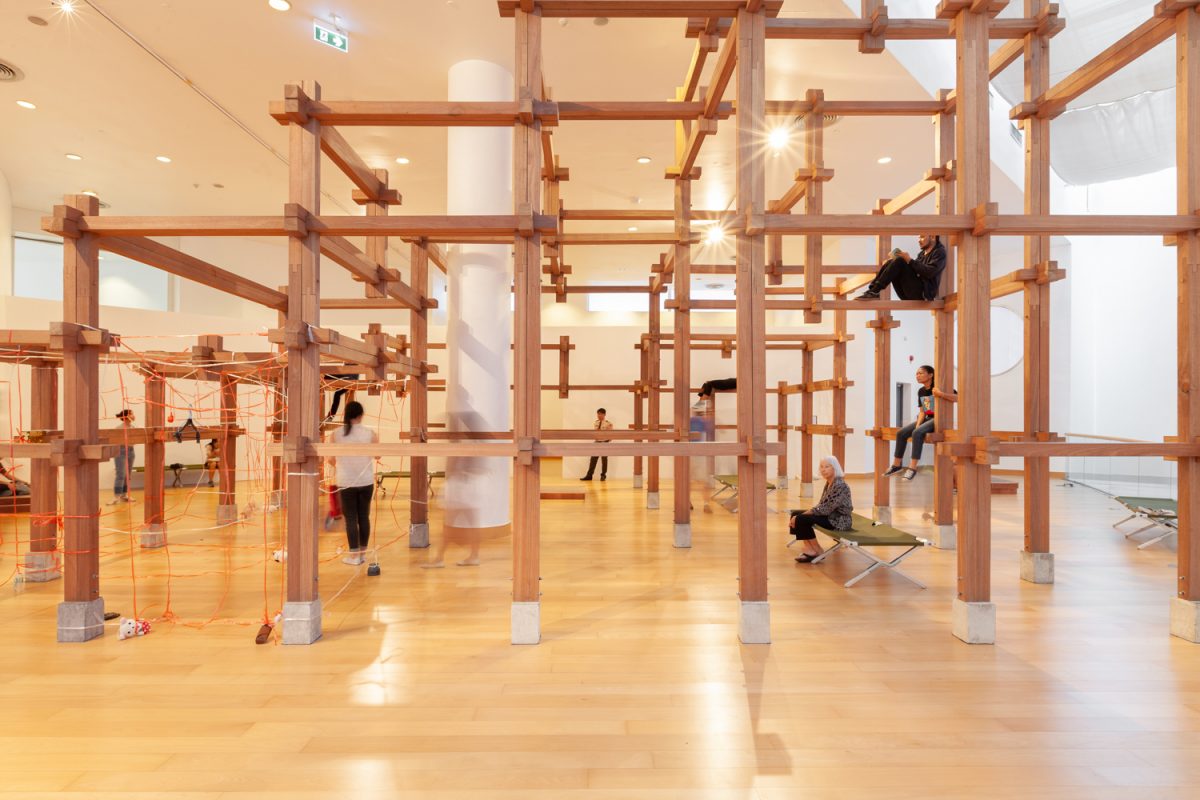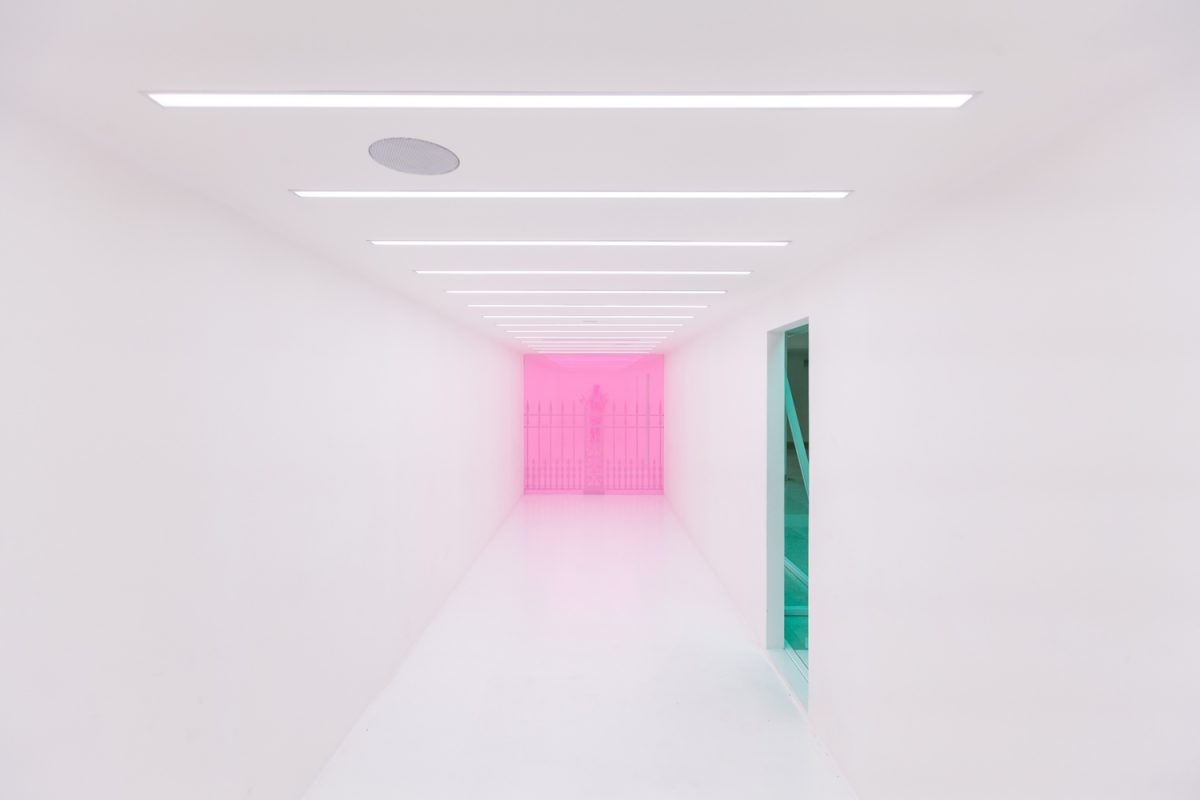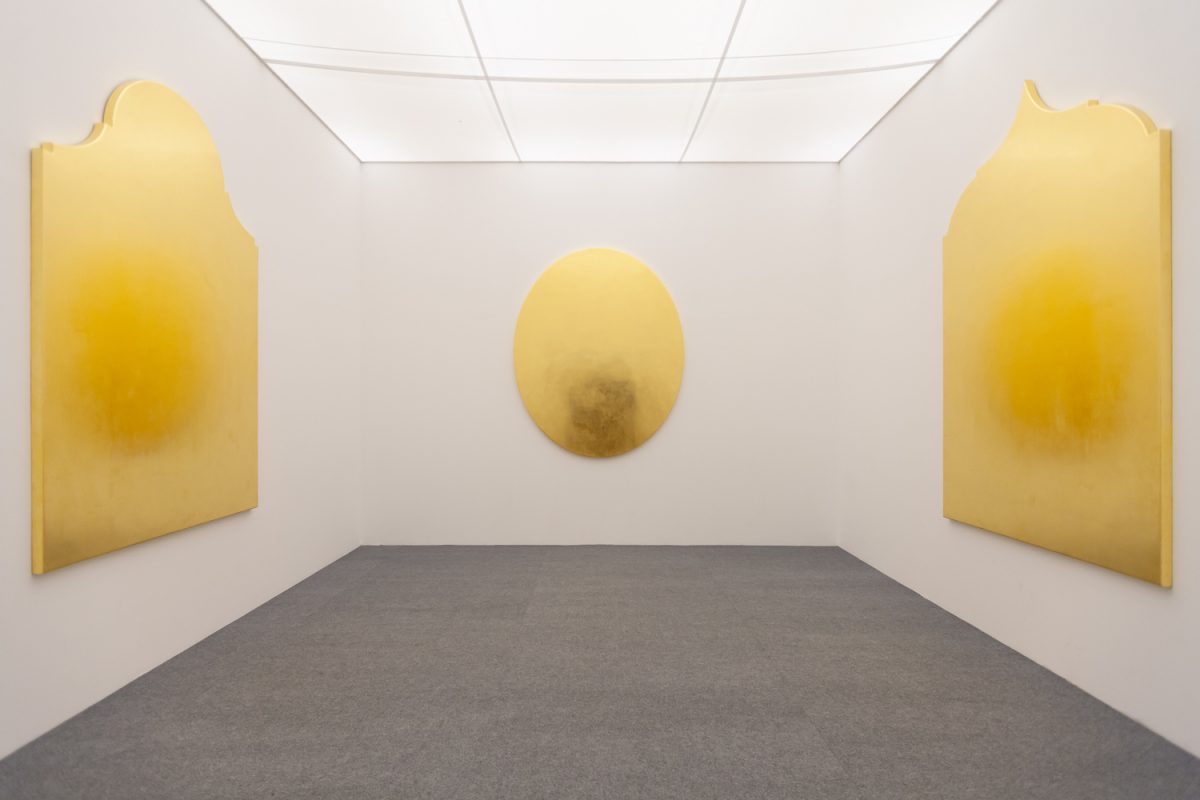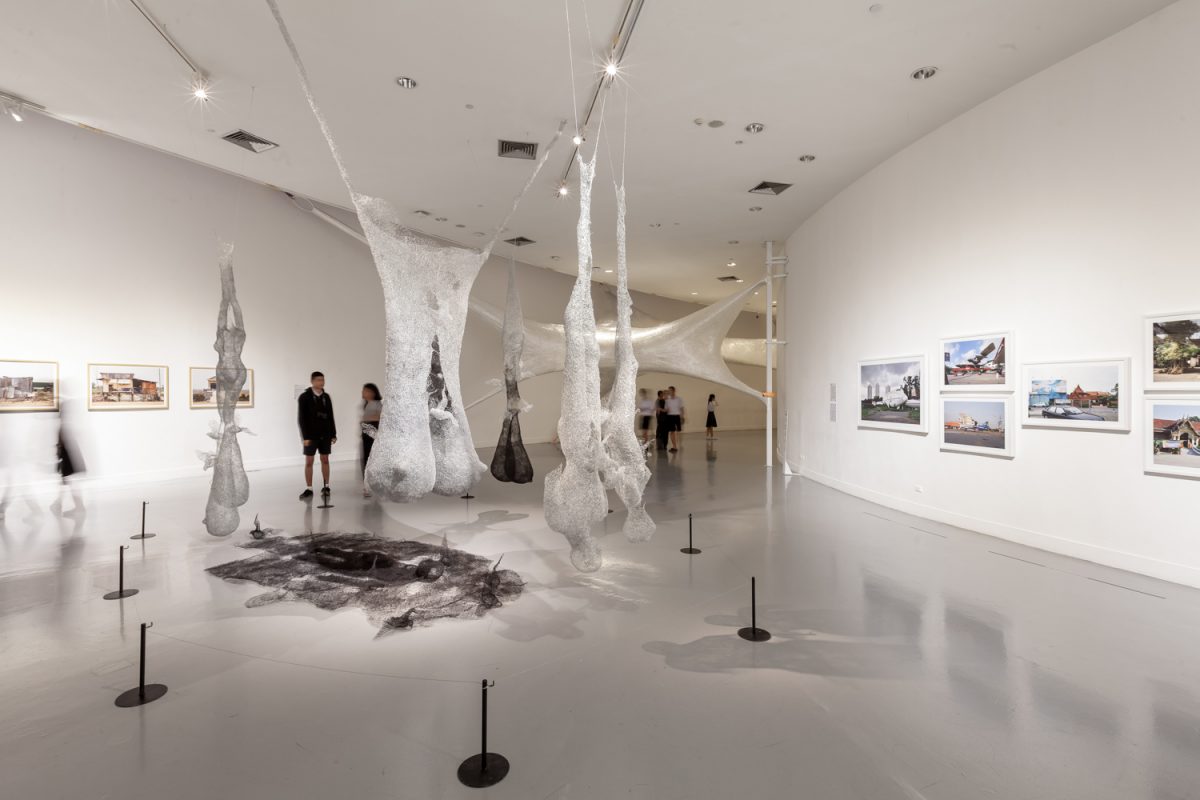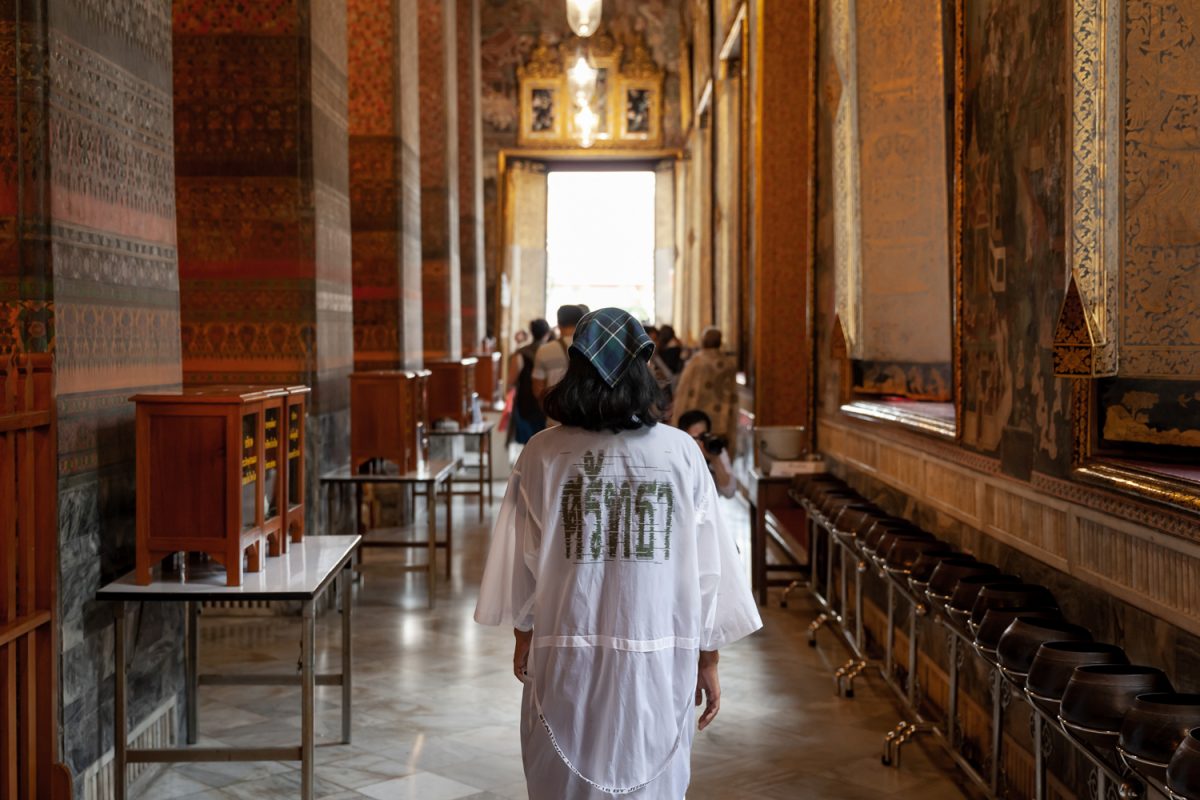THROUGH THE LEADERSHIP OF PROMINENT THAI CURATOR APINAN POSHYANANDA, THE FIRST EDITION OF BANGKOK ART BIENNALE CAN BE SEEN AS AN ATTEMPT TO DEVELOP THE INFRASTRUCTURE OF THAILAND’S ART SCENCE FOR THE LONG-TERM
The Bangkok Art Biennale successfully launched its inaugural large-scale exhibition at over 20 locations this past October, despite current questions about the over-saturation of biennales being held around the world.
Many seminars and articles have discussed the impasse that today’s art biennales face, from curatorial fails to bankrupted biennales. However, in spite of all of this, Thailand actually became home to three biennales this year, (Bangkok Art Biennale, Bangkok Biennial, and Thailand Biennale, Krabi 2018) all organized by different groups hungry for a large-scale contemporary art platform.
It was the Bangkok Art Biennale perhaps that caught the most local and international attention, with its curatorial team headed by none other than Thailand’s Prof. Dr. Apinan Poshyananda. His team consisted of Southeast Asia’s leading figures in art academics such as Former Director of Bangkok Art and Culture Centre (BACC), Luckana Kunavichayanont; Dr. Adele Tan, currently a Senior Curator at the National Gallery of Singapore; Prof. Patrick D. Flores of the University of the Philippines; Asst. Prof. Sansern Milindasuta from Bangkok University; and Asst. Prof. Wutigorn Kongka from King Mongkut’s Institute of Technology Ladkrabang.
Many asked why Bangkok suddenly wanted to host its own biennale and the Artistic Director himself, Dr. Apinan Poshyananda said it was a good time to launch the event in Thailand, partly because of the country’s control in terms of governance and economics. There have been multiple attempts over the years but only now has a long-term financial plan been agreed upon by supporting parties. Clearly, content and artist participation was never an issue but the literal million dollar issue got in the way. Privately funded and supported by a few of Thailand’s biggest corporations, the Bangkok Art Biennale seems to have received only little governmental help in terms of logistics and location by comparison.
The disappointment in the lack of governmental interest in contemporary art development is not a surprising one since there is currently no dedicated national museum in Thailand for contemporary art, let alone modern art, when since the 1920s, Thailand has had multiple seminal modern and contemporary artists exhibiting around the world. Plans of building one have been delayed for many years and the country is still waiting. In fact, multiple scandals of art funding being cut nationally throughout the past decades go quietly unnoticed and most recently with the threat of closure of the Bangkok Art and Culture Centre (BACC), the capital city finds itself embroiled in a Mexican stand-off between the very art community that protested for its establishment as an art center in the first place, the appointed Bangkok governor who wants to take over the BACC, and of course the public. Hence the idea of an art biennale definitely is more proactive and productive, regardless of the tired attitude the large-scale art exhibition has garnered over the years.
In the present day, there are around 250 art biennales globally listed with the Biennial Foundation, each competing for most impressive setting or pavilion design, catering and parties, cashing in on the experience economy. Many have criticized the biennale structure for scrambling the consumption of culture and luring the audience’s focus away to adopt a capitalistic approach. Art experience debate aside, it is, however, noteworthy to mention that these large-scale exhibitions do provide infrastructure for artists to be able to host their artistic ambitions where galleries or museums fail to offer, albeit it being temporal. (…)
Read the full article in art4d No.265

เริ่มต้นอย่างสวยสดงดงามต้อนรับเดือนตุลาคมกับ Bangkok Art Biennale เทศกาลศิลปะร่วมสมัยที่ใช้สถานที่กว่า 20 แห่งทั่วกรุงเทพฯ เป็นไซต์จัดงานท่ามกลางเสียงอื้ออึงและคำถามเกี่ยวกับความถี่ของงานเบียนนาเล่ที่ถูกจัดขึ้นเป็นว่าเล่นทั่วโลกในระยะไม่กี่ปีมานี้
ในหลายๆ วงสนทนาและบทความที่ได้ถกเถียงกันถึงเรื่องทางตันที่งานประเภทนี้กำลังเผชิญ ทั้งความล้มเหลวในด้านกระบวนการคิวเรต ไปจนถึงปัญหาการขาดทุน แต่ไม่ว่าจะมีประเด็นอะไรก็ตาม ปีนี้ประเทศไทยกลับสวนกระแสจัดเบียนนาเล่ขึ้นมาถึงสามงานที่ล้วนมีผู้จัดต่างกันไป (Bangkok Art Biennale, Bangkok Biennial และ Thailand Biennale, Krabi 2018) ราวกับว่าทุกคนพร้อมใจกันหิวกระหายที่จะสร้างเวทีศิลปะร่วมสมัยขนาดใหญ่ให้เกิดขึ้นในประเทศไทยเสียที
Bangkok Art Biennale ดูจะได้รับความสนใจจากผู้ชมทั้งในไทยและต่างชาติมากที่สุด ทีมภัณฑารักษ์ที่มี ศ.ดร. อภินันท์ โปษยานนท์ เป็นหัวหอก ประกอบไปด้วยบุคคลสำคัญในแวดวงศิลปะเอเชียตะวันออกเฉียงใต้อย่าง ลักขณา คุณาวิชยานนท์ อดีตผู้อำนวยการหอศิลปวัฒนธรรมแห่งกรุงเทพมหานคร (BACC) Dr. Adele Tan ภัณฑารักษ์อาวุโสของ National Gallery of Singapore รวมไปถึง Prof. Patrick D. Flores จาก University of the Philippines ผศ. สรรเสริญ มิลินทสูต จากมหาวิทยาลัยกรุงเทพ และ ผศ. วุฒิกร คงคา จากสถาบันเทคโนโลยีพระจอมเกล้าเจ้าคุณทหารลาดกระบัง
หลายคนตั้งคำถามว่าทำไมจากที่เงียบเหงามานานจู่ๆ กรุงเทพฯ ก็มีเบียนนาเล่เกิดขึ้นมาในปีนี้ ศ.ดร. อภินันท์ โปษยานนท์ ผู้อำนวยการศิลป์ของ Bangkok Art Biennale ให้คำตอบต่อคำถามที่ว่านี้ว่า ปีนี้เหมาะสมที่สุดแล้วสำหรับการจัดงาน ส่วนหนึ่งมาจากสถานการณ์ทางการเมืองและเศรษฐกิจของประเทศ มีความพยายามหลายต่อหลายครั้งในการจัดเทศกาลศิลปะนานาชาติในประเทศไทย และตอนนี้เป็นช่วงเวลาเดียวที่ได้รับการตอบรับจากผู้สนับสนุนทางการเงินทุกฝ่าย เห็นได้ชัดว่า “เนื้อหา” และ “ศิลปิน” ที่เข้าร่วมไม่ได้เป็นประเด็น แต่ปัญหาคืองบประมาณหลายร้อยล้านที่เป็นอุปสรรค นอกจากเม็ดเงินมหาศาลจากกลุ่มทุนใหญ่ยักษ์ของไทย Bangkok Art Biennale ดูจะได้รับเงินช่วยเหลือจากรัฐเพียงน้อยนิด โดยเฉพาะกับงานสเกลขนาดใหญ่ที่มีภาระค่าใช้จ่ายเรื่องการขนส่งและสถานที่จัดงาน
ไม่ใช่เรื่องแปลกใจเท่าไหร่ที่การจัดเทศกาลศิลปะร่วมสมัยจะไม่ได้รับการสนับสนุนจากรัฐบาล ถึงแม้ศิลปินไทย (สมัยใหม่ / ร่วมสมัย) จะออกไปแสดงผลงานในเทศกาลศิลปะร่วมสมัยรายการใหญ่ๆ ทั่วโลกมาตั้งแต่ทศวรรษที่ 1920s แต่จนถึงตอนนี้เรายังไม่มีพิพิธภัณฑ์ศิลปะร่วมสมัยเลยด้วยซ้ำ อีกทั้ง แผนในการสร้างพิพิธภัณฑ์ศิลปะร่วมสมัยแห่งชาติก็ถูกเลื่อนออกไปอย่างไม่มีกำหนด ที่แย่กว่านั้นคือความฉาวโฉ่ของการตัดงบสนับสนุนการพัฒนาศิลปะร่วมสมัยในระดับนโยบายอย่างเงียบๆ ตลอดหลาย 10 ปีที่ผ่านมา หรือที่น่าเกลียดที่สุดคือคำขู่จะปิด BACC ที่ทำให้กรุงเทพมหานครตกเป็นเป้าโจมตีของคนในวงการศิลปะที่เคยออกมาเคลื่อนไหวในอดีตในยุคก่อตั้งหอศิลป์แห่งนี้ เช่นเดียวกันกับท่าทีของผู้ว่าราชการกรุงเทพมหานคร (ที่มีที่มาจากการแต่งตั้ง) ที่ต้องการจะรวบเอา BACC มาดูแลเสียเอง ก็ถูกวิจารณ์เป็นอย่างมากในหมู่สาธารณะชน ด้วยเหตุเช่นนี้ แนวคิดในการจัดงานเบียนนาเล่จึงดูเป็นแนวคิดเชิงรุกที่ดูเป็นไปได้ และน่าจะให้อะไรกลับมามากว่าโดยเฉพาะกับประเทศไทย แม้ว่าแนวโน้มในต่างประเทศช่วงหลายปีที่ผ่านมาคนจะเริ่มเหนื่อยหน่ายกับการจัดงานแบบนี้แล้วก็ตาม
ในโลกเราตอนนี้มีเบียนนาเล่มากถึง 250 รายการ ที่ขึ้นทะเบียนกับ Biennial Foundation แต่ละเจ้าล้วนแข่งขันกันด้วยสถานที่ตั้ง การออกแบบพาวิลเลียน รายการอาหารและปาร์ตี้ ด้วยหวังใจว่าจะสร้างความประทับใจและทำรายได้จาก “การขายประสบการณ์” หลายฝ่ายวิพากษ์วิจารณ์โครงสร้างของเบียนนาเล่ว่าไม่ต่างอะไรกับการบริโภควัฒนธรรม และดึงเอาความสนใจของผู้ชมให้ไปเห็นดีเห็นงามกับแนวคิดทุนนิยม แต่ถ้ายกประเด็นถกเถียงเกี่ยวกับประสบการณ์ทางศิลปะออกไป มันก็เป็นเรื่องที่ต้องยอมรับว่างานนิทรรศการศิลปะขนาดใหญ่เหล่านี้ช่วยสร้างโครงสร้างพื้นฐานให้กับศิลปินในการที่จะแสดงออกถึงความทะเยอทะยานทางศิลปะของพวกเขาในแบบที่หอศิลป์และพิพิธภัณฑ์ไม่สามารถทำให้ได้ แม้ว่ามันจะเป็นแค่เพียงชั่วคราวก็ตาม (…)
อ่านบทความฉบับเต็มได้ใน art4d No.265
TEXT: ADULAYA HOONTRAKUL
PHOTO: KETSIREE WONGWAN

